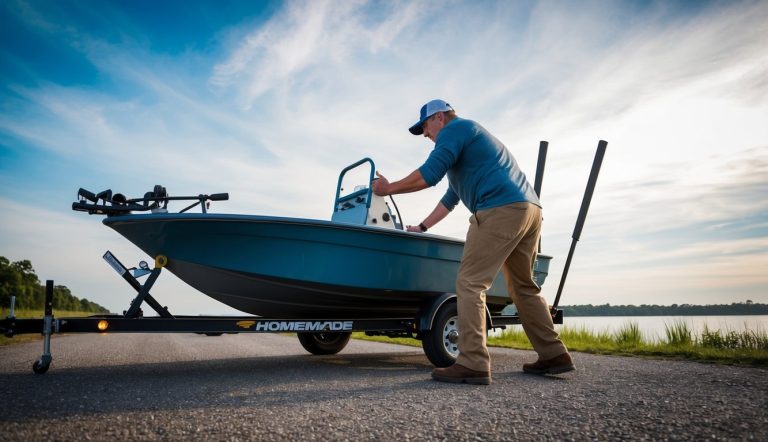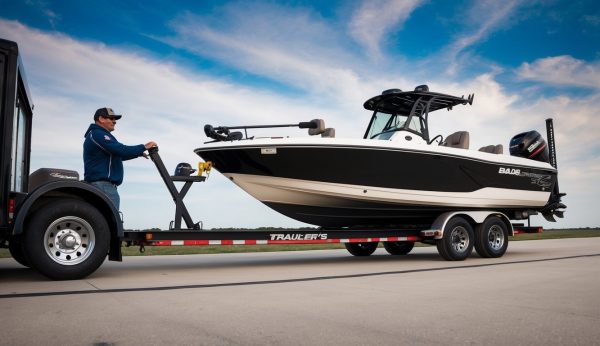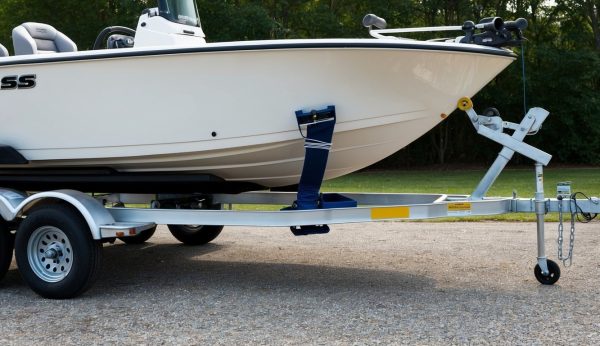When you own a bass boat, you need to think about how to transport it to water. Moving your boat can be done yourself or with professional help. Each option comes with different factors to weigh.
Choosing between DIY boat transport and hiring professionals involves considering costs, safety, and your personal comfort level with towing. While the DIY approach offers control and potential savings, professional transport provides expertise and convenience. Your decision should balance your budget, time constraints, and the value you place on peace of mind.
Key Considerations for DIY Bass Boats Transport

Transporting your bass boat yourself requires careful planning and attention to several critical factors. Taking the time to understand these considerations will help ensure your boat arrives safely at its destination.
Understanding Weight and Balance
When transporting your bass boat, weight distribution is crucial for safe travel. Too much weight can lead to trailer sway and reduced control on the road. Bass boats typically weigh between 1,500-2,500 pounds without equipment, fuel, or gear. You should know your tow vehicle’s maximum towing capacity and never exceed 80% of this limit for safety. This gives you a margin for unexpected conditions like wind and rain.
Balance your boat properly on the trailer, with approximately 60% of the weight forward of the trailer axle. Uneven weight distribution can cause dangerous trailer sway at highway speeds.
Weight Distribution Checklist:
- Remove unnecessary equipment before transport
- Distribute gear evenly throughout the boat
- Secure loose items that could shift during transport
- Empty live wells and bilges to reduce weight
Choosing the Right Trailer
Your trailer must be specifically rated for your boat’s weight and length. A properly sized trailer provides adequate support and prevents structural damage to your bass boat during transport. Look for trailers with multiple adjustable bunks or rollers that support the hull along its length. Adequate support prevents hull distortion and stress points during travel.
Consider the trailer’s braking system carefully. For boats over 1,500 pounds, surge brakes or electric brakes are essential for safe stopping distances.
Trailer Features to Prioritize:
- Rust-resistant materials (galvanized or aluminum)
- LED lights (more reliable than incandescent)
- Spare tire and jack
- Adequate tie-down points
- Proper tongue weight (7-10% of total loaded weight)
Invest in a trailer with good quality tires rated for highway speeds. Check tire pressure before every trip, as under-inflated tires can overheat and fail.
Securing the Boat Properly
Properly securing your bass boat prevents shifting during transport, which can damage both your boat and trailer. Use at least four tie-down straps – two at the bow and two at the stern. Ratchet straps are preferred over bungee cords or rope because they provide consistent tension. Safety challenges can arise when boats aren’t secured correctly during transport.
Protect your boat’s finish by using protective sleeves on straps where they contact the hull. This prevents abrasion damage from road vibration.
Securing Process:
- Center the boat on trailer bunks/rollers
- Attach the bow to the trailer’s winch hook
- Secure transom tie-downs
- Add side straps if traveling long distances
- Double-check all connections before departure
Remember to secure loose items inside the boat. Hatches can open during transport, allowing gear to blow out onto the highway, creating hazards for other drivers.
Benefits of DIY Bass Boats Transport
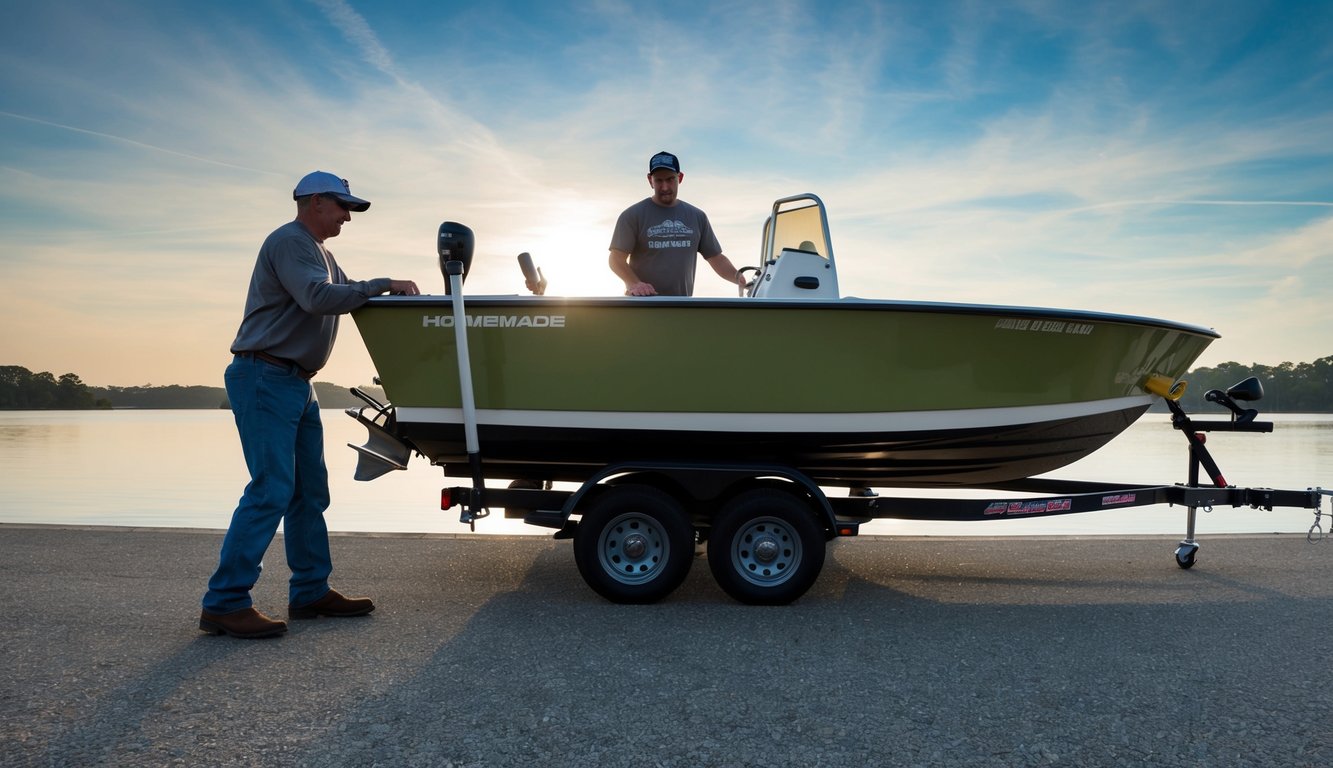
Transporting your bass boat yourself offers significant advantages that can make it worth the effort. The right approach can save money and give you more control over the entire process.
Cost-Effectiveness
- DIY boat shipping is primarily attractive because of the potential to save money. Professional transport services include overhead costs and service fees that you can avoid by handling the transportation yourself. These savings can be substantial, especially for shorter distances.
- You’ll only need to pay for fuel, any necessary equipment rentals, and potential overnight accommodations if traveling long distances. For boat owners on a budget, these savings make DIY transport an appealing option.
- The initial investment in proper towing equipment can pay for itself after just a few trips. Many bass boat owners already have suitable vehicles for towing, making the transition to DIY transport relatively straightforward.
Flexibility and Control
- When you transport your boat yourself, you gain complete control over the schedule and route. This flexibility allows you to plan around your own availability rather than waiting for a transport company’s timeline.
- You can choose the exact pick-up and delivery times that work best for you. This control is particularly valuable during busy fishing seasons when professional transporters might be booked solid.
- DIY transport also lets you personally oversee the handling of your boat. Many owners prefer this hands-on approach to ensure their vessel receives proper care during transit. You can make immediate decisions about road conditions, weather concerns, or any other factors that might affect safe transport.
Challenges of DIY Bass Boats Transport
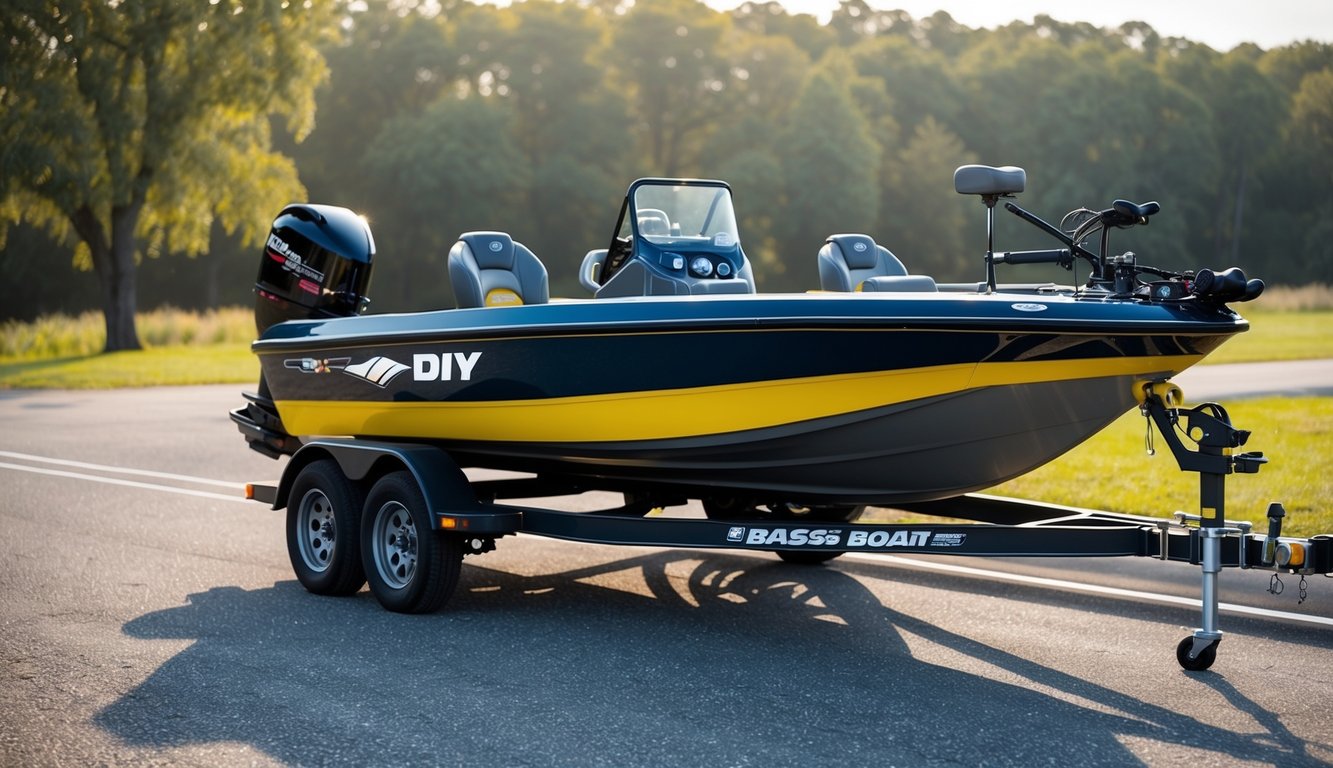
Transporting your bass boat yourself comes with several significant hurdles that could impact both your vessel and your overall experience. These challenges require careful planning and consideration before you decide to handle transportation on your own.
Potential for Damage
- DIY boat shipping presents considerable risks to your valuable bass boat. Without proper equipment and experience, you might inadvertently damage the hull, motor, or electronics during loading, transit, or unloading.
- Secure fastening is critical yet challenging for beginners. Improper tie-downs can lead to shifting during transport, causing scratches, dents, or more serious structural damage.
- Road hazards pose another threat. Debris, potholes, and unexpected obstacles might cause trailer bouncing that transfers shock to your boat. This can damage the gel coat, stress the hull, or loosen fittings.
- Weather conditions add complexity to DIY transport. Wind resistance against your bass boat can affect vehicle handling and fuel efficiency. Rain or snow creates slippery conditions that increase accident risks.
Time and Effort Required
- Preparing for DIY bass boat transport demands significant time investment. You’ll need to properly secure all loose items, remove electronics when possible, and cover the boat appropriately for the journey.
- Route planning becomes essential, especially with larger bass boats that may require avoiding low bridges or narrow roads. You must research weight restrictions, height clearances, and permit requirements for your specific route.
- The physical demands shouldn’t be underestimated. Loading and unloading a bass boat requires strength and proper technique to avoid personal injury or boat damage. Many boat owners underestimate the effort involved in these operations.
- Long-distance DIY transport means extended driving hours, often with reduced visibility and handling challenges. Your trip may take significantly longer than expected due to the need for frequent stops and slower speeds when towing.
